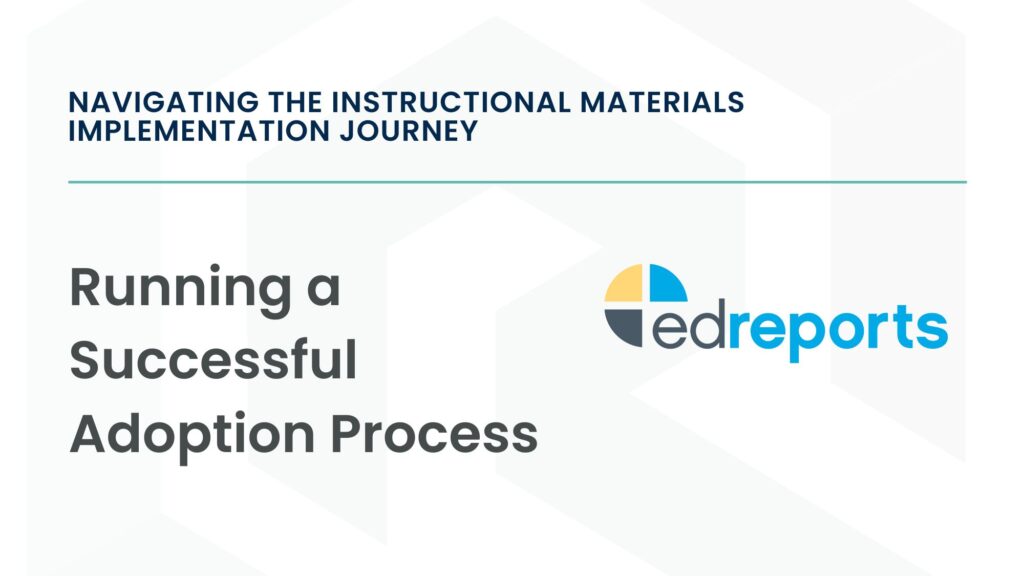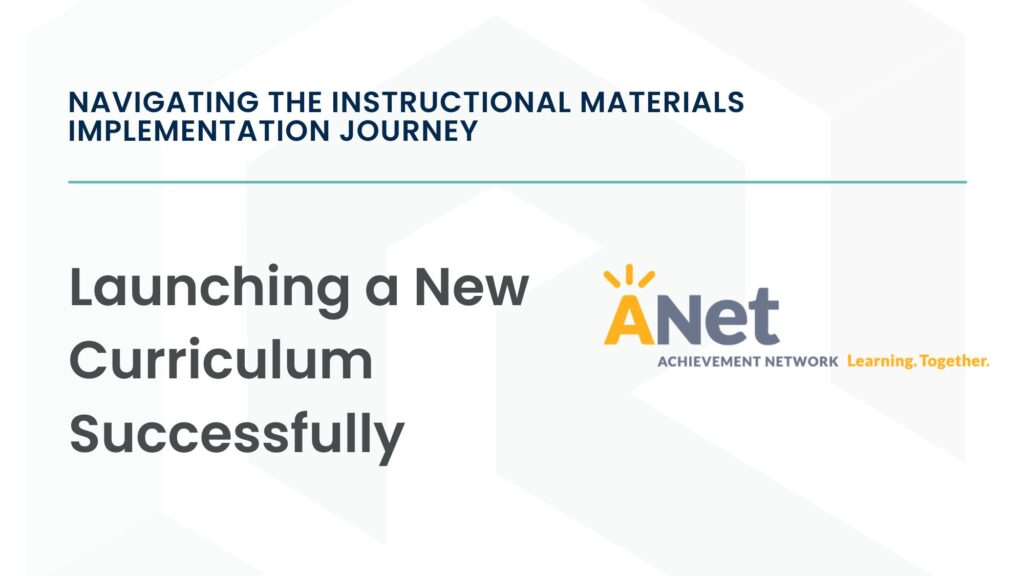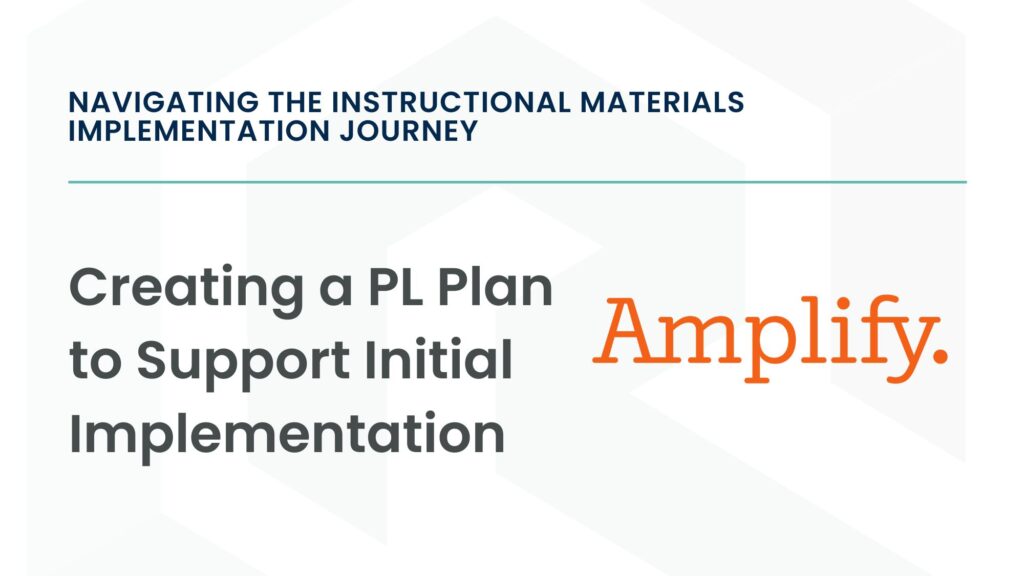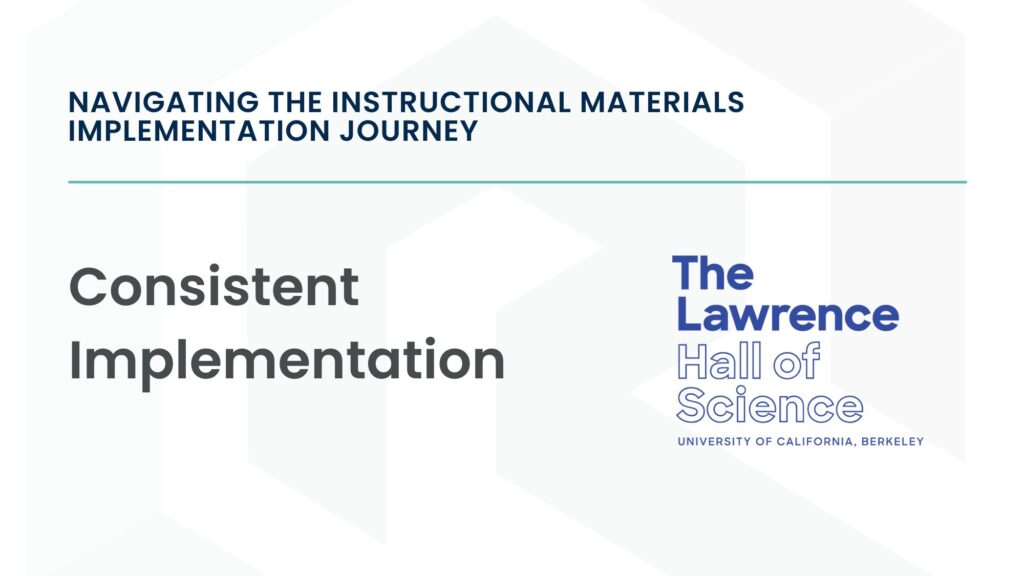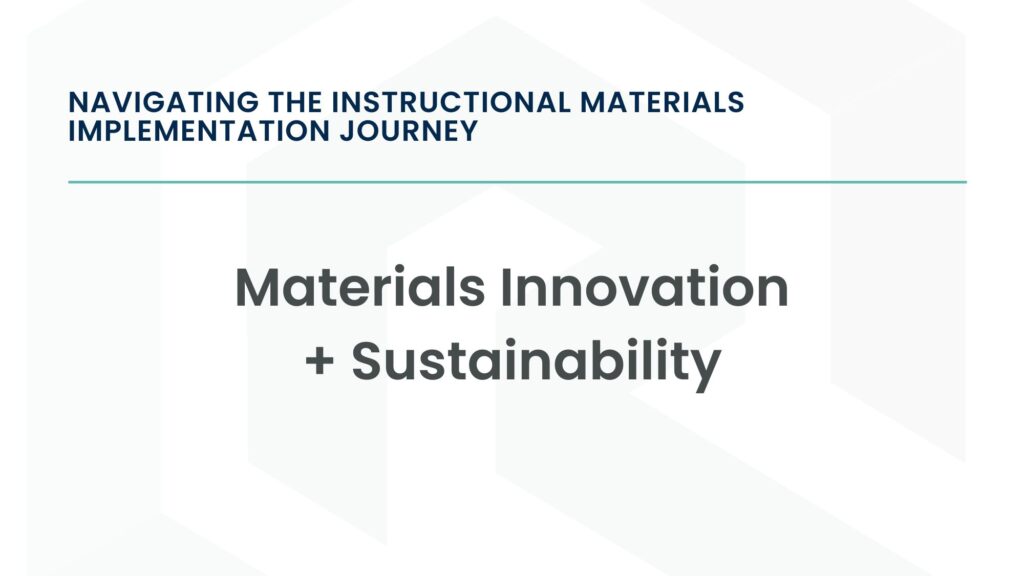Implementation Guidance
As educators, we often hear the phrase, “If you give teachers high-quality instructional materials, then student outcomes will improve.” As Coach Lee Corso would say, “Not so fast, my friend!”
Research shows that access to high-quality instructional materials (HQIM) is vital for improving teaching and learning. However, HQIM require a fundamental shift in teacher practice, professional learning, systems, structures, and policies. Without a clear roadmap for navigating the implementation journey, these enabling conditions become serious roadblocks to improving student learning.
the curriculum implementation journey
Rivet Education has identified five stages of instructional materials implementation, building upon the National Implementation Research Network’s four phases of implementation science.
Exploration
Program Installation
Initial Implementation
Consistent Implementation
Innovation + Sustainability





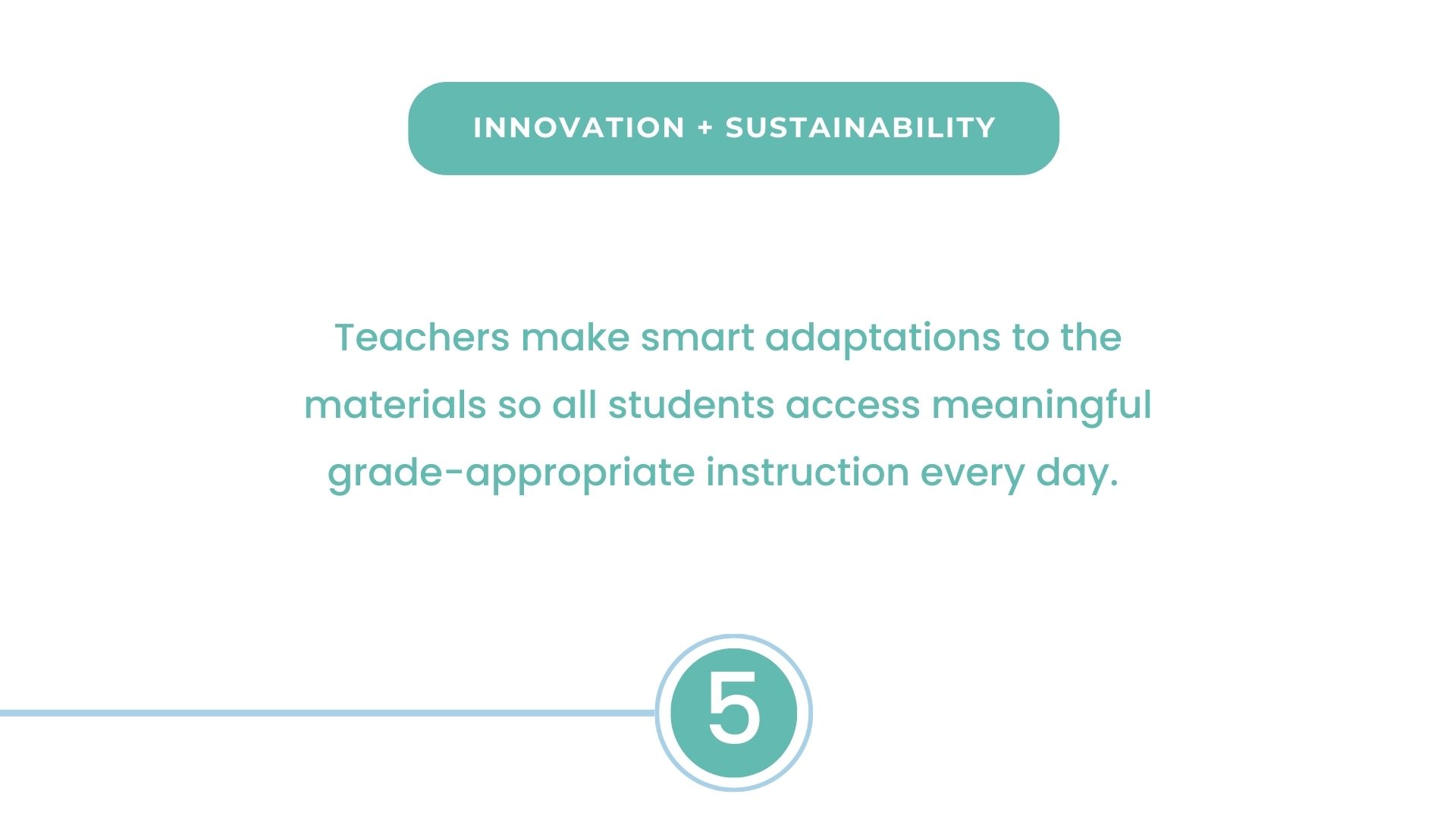
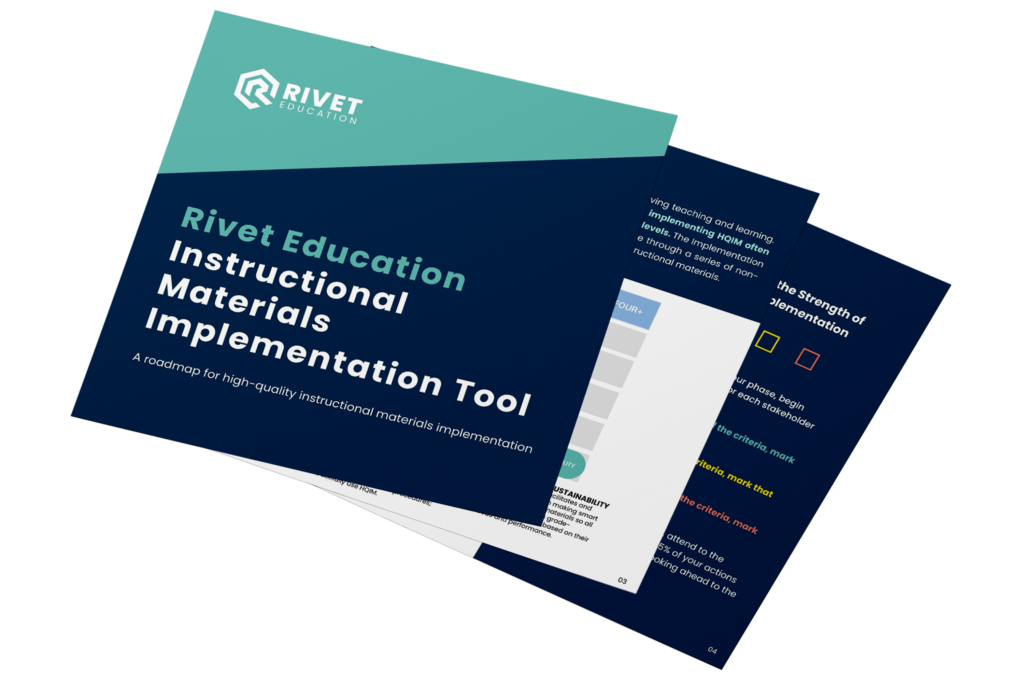
instructional materials implementation tool
The Instructional Materials Implementation Tool is a roadmap for each phase of HQIM implementation, outlining key actions and corresponding success criteria that help district leaders answer the question, “Are we on track?”
Leaders can use the tool to:
- Preview and understand the entire instructional materials selection and implementation journey.
- Identify which phase of implementation you are in, regardless of the year of implementation, using the quick checklist at the beginning of each phase.
- Determine the strength of your implementation and readiness for the next phase.
Mt. horeb case study
See the Instructional Materials Implementation Tool put to use. Rivet created a two-year case study on the Mount Horeb Area School District’s implementation journey. View or download the Mt. Horeb Case Study to see how they succeeded.
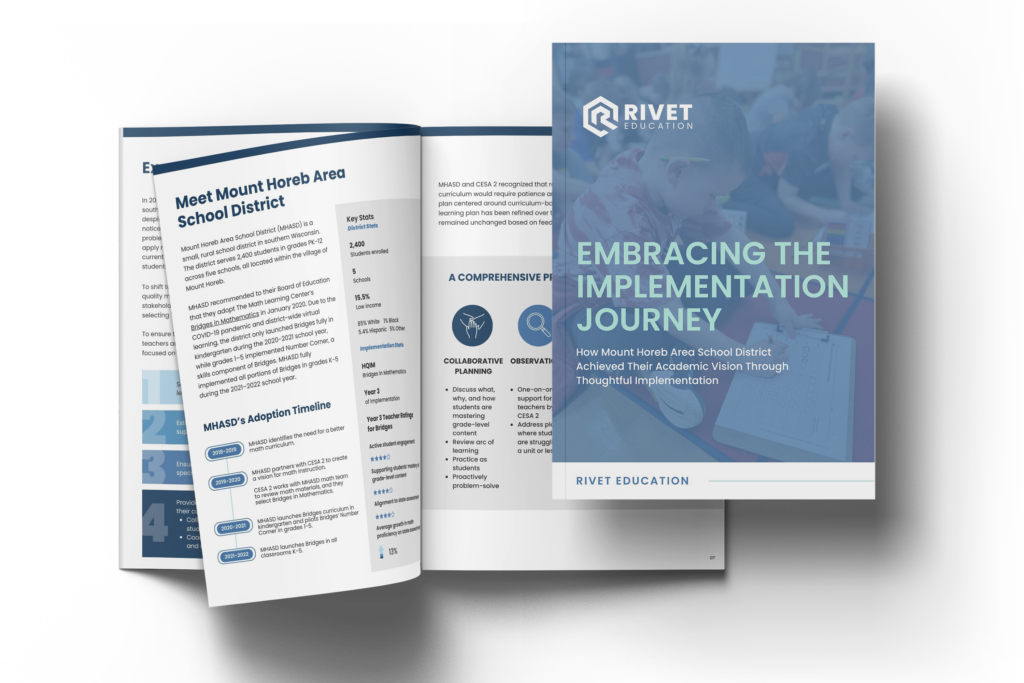
NAVIGATING THE INSTRUCTIONAL MATERIALS IMPLEMENTATION JOURNEY
The series below features blogs and webinars highlighting each phase of the implementation journey.
PHASE ONE: Exploration of Materials

Implementation science suggests that people often move through predictable stages when enacting a new program (such as a new curriculum) over multiple years. While every district is unique, the stages of the journey are the same.
PHASE TWO: Program Installation

In September, we discussed the exploration phase in the instructional materials implementation journey, where stakeholders come together to review and select a new curriculum. Once the curriculum is adopted and purchased, the next phase of the journey involves creating the conditions for a successful curriculum launch so that school leaders, teachers, and, ultimately, students and families experience success. At Rivet Education, we call this phase Program Installation.
PHASE THREE: Initial Implementation

In October, we discussed the program installation phases where district and school leaders create conditions for a successful curriculum launch for teachers and experience for students and families. Once you have established and/or updated the processes and procedures that will support the curriculum being used effectively, you are ready for the initial implementation stage.
PHASE FOUR: Consistent Implementation

In this blog, we will examine the critical steps that school and district leaders should consider as they move through the advanced stages of implementation of instructional materials, allowing them to achieve the intended impact on students. During this stage, the instructional materials integrate into teachers’ regular practice, leading to consistent skillful use, while district and school policies and procedures align with and support this skillful use. At Rivet, we call this Consistent Implementation.
PHASE FIVE: Innovation & Sustainability

This blog is the final post in our “Navigating Instructional Materials Implementation” series, exploring the five implementation phases of high-quality instructional materials, also known as HQIM. In each phase, we explore the steps that each level in the K-12 system (district leaders, school leaders, and teachers) must take to maximize the full benefits of their HQIM.

